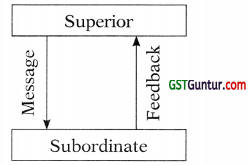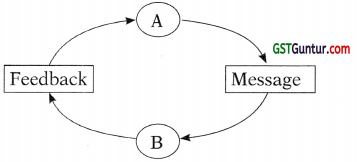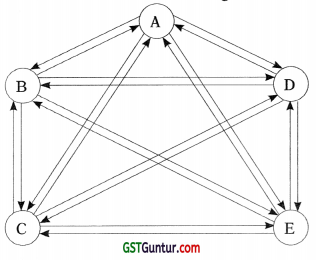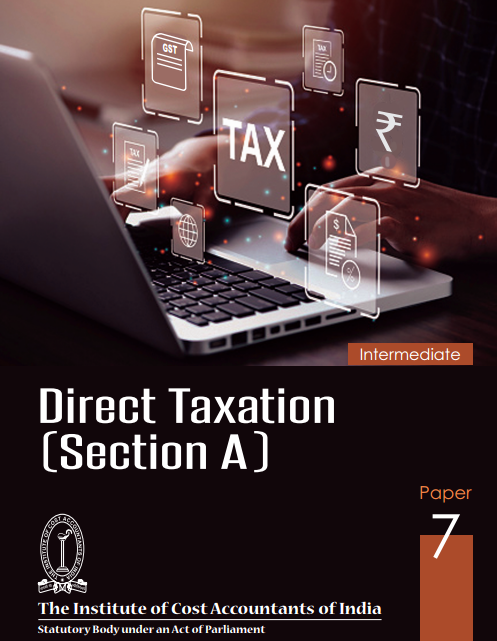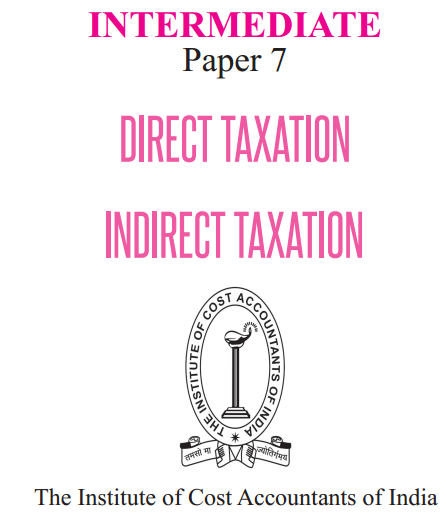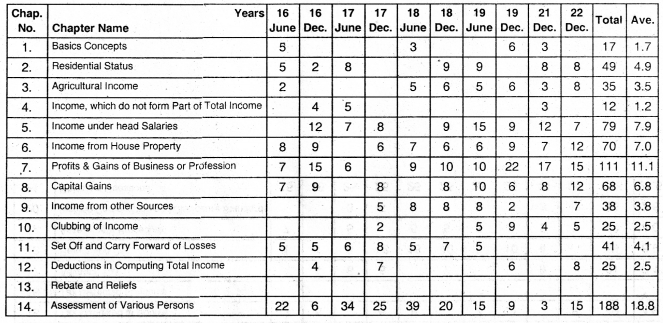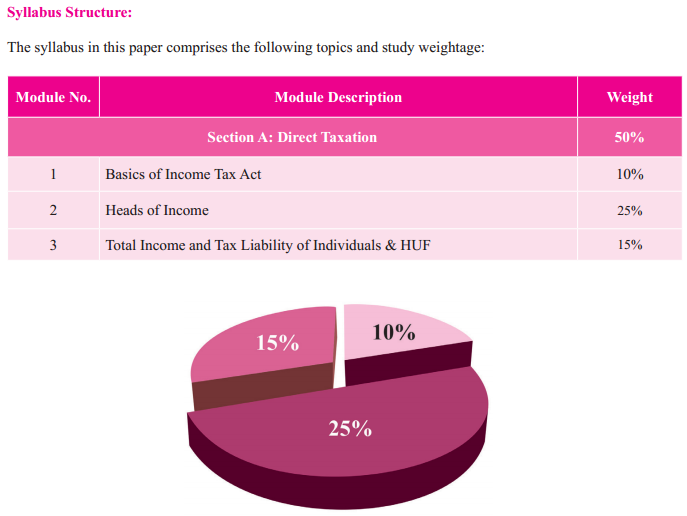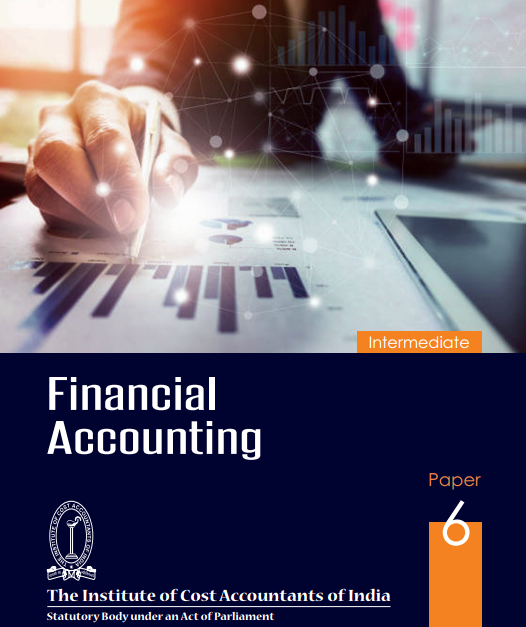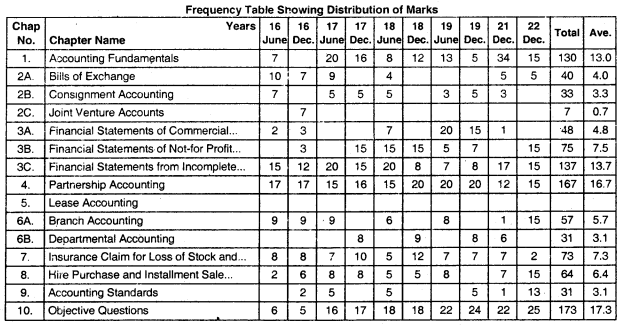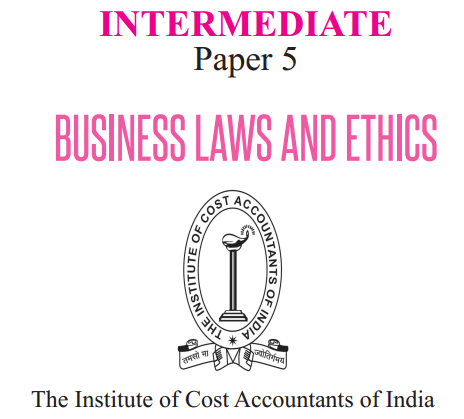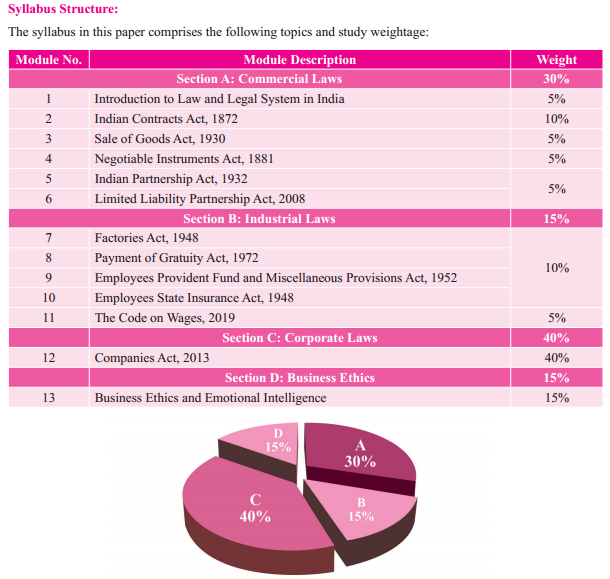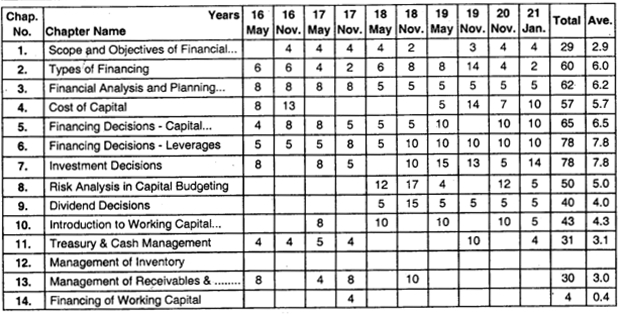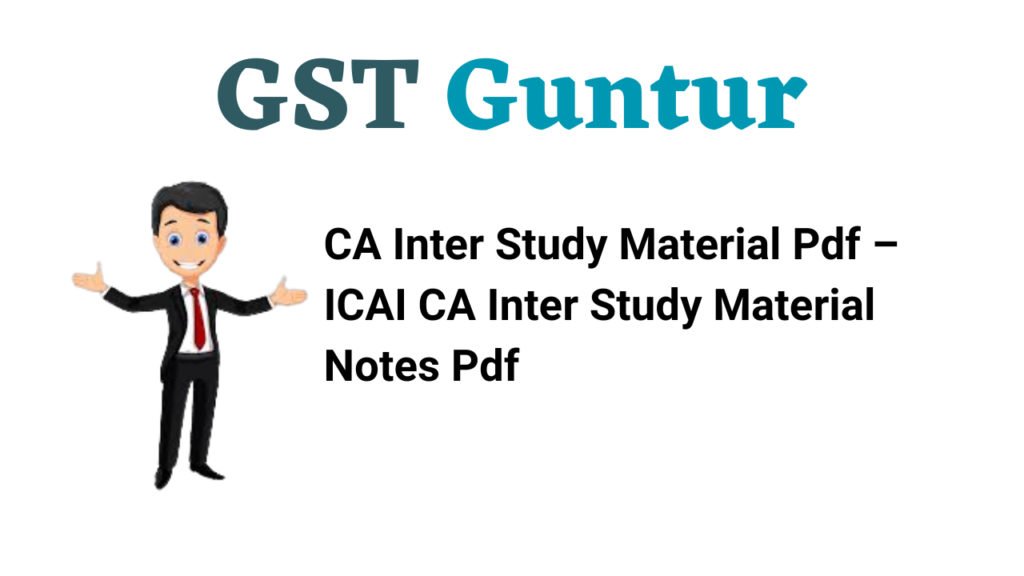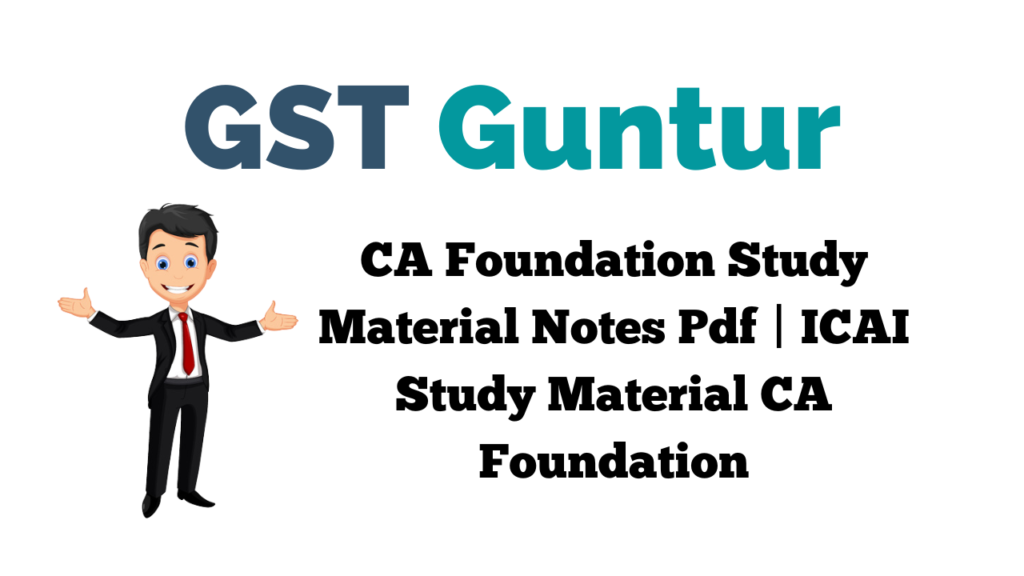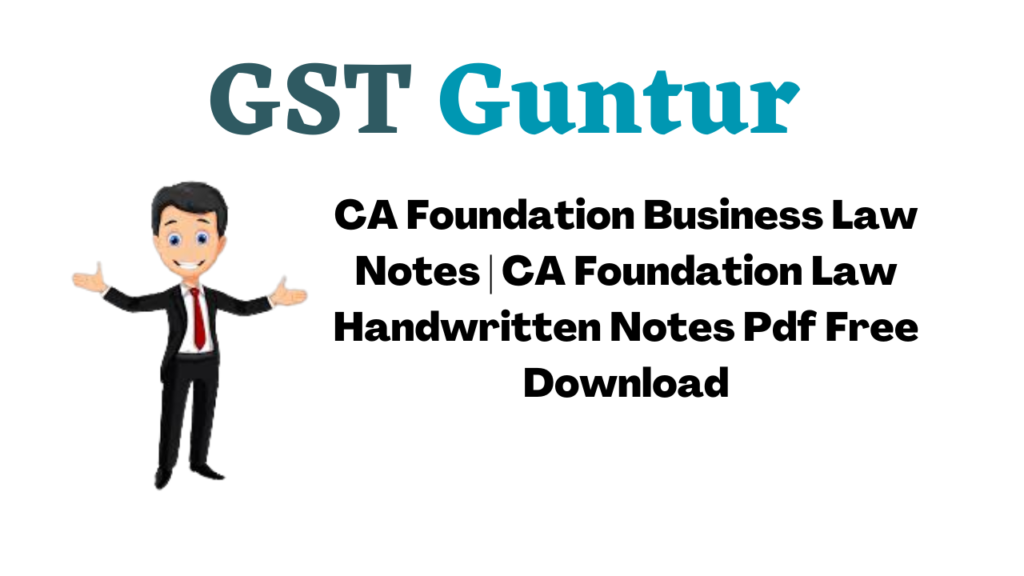CA Foundation BCK Chapter 1 MCQ with Answers – Business and Commercial Knowledge: An Introduction
Students should practice CA Foundation BCK Chapter 1 MCQ with Answers Business and Commercial Knowledge: An Introduction – CA Foundation BCK MCQ Questions based on the latest syllabus.
BCK CA Foundation Chapter 1 MCQ Questions – Business and Commercial Knowledge: An Introduction
1. On the basis of activities as a domain, the list does not include:
(a) Manufacturing
(b) Trading
(c) Commerce and Services
(d) Human Resource
Answer:
(d) Human Resource
2. On the basis of functions as a BCK domain, the list includes:
(a) Production
(b) Accounting, Finance and Taxa-tion
(c) Human Resource
(d) All of the above
Answer:
(d) All of the above
3. Economic laws, philosophy, Psychology, Sociology, etc. are related with the BCK domain:
(a) Mode
(b) Scale
(c) Underlying disciplines
(d) Focus
Answer:
(c) Underlying disciplines
![]()
4. As per Oxford online dictionary, a specified sphere of knowledge is called as ________.
(a) Business and Commercial Knowledge
(b) Domain
(c) Principle
(d) All of the above
Answer:
(b) Domain
5. Business and Commercial Knowledge as a domain is :
(a) Vast
(b) Eclectic
(c) Ever-evolving and expanding
(d) All of the above
Answer:
(d) All of the above
6. In case of business, the range of activities includes manufacturing, trading, services, retail & domestic trade, door to door selling, malls, weekly haats, etc. Therefore, BCK is.
(a) Vast
(b) Eclectic
(c) Ever-evolving and expanding
(d) All of the above
Answer:
(a) Vast
7. BCK has derived from various dis-ciplines like marketing, accounting & finance, operations, human behaviour, laws, economics, ethics, etc. Therefore, BCK is.
(a) Eclectic
(b) Uni-disciplinary
(c) Bi-disciplinary
(d) None of the above.
Answer:
(a) Eclectic
8. The businesses draw their strategies to beat their competitors. BCK has adapted the term “Strategy” from which of the following original discipline?
(a) Military
(b) Biology
(c) Chemistry
(d) None of the above
Answer:
(a) Military
9. The BCK Vocabulary includes “Bulls & Bears”. These have been taken from the discipline:
(a) Military
(b) Biology
(c) Chemistry
(d) None of the above
Answer:
(b) Biology
10. The information and communication technology has introduced several terms in the lexicon of BCK e.g. 24 X 7, B2B, B2C, etc. The impact of this evolution is the decline and demise of old businesses and newer ways of doing the business. On this basis, it can be said that BCK is.
(a) Vast
(b) Multi-disciplinary
(c) Eclectic
(d) Even-evolving and expanding.
Answer:
(d) Even-evolving and expanding.
11. The Chartered Accountants are responsible for putting in place a credible system of truthful and fair accounting and reporting of the society’s resources, their deployment and utilisation. Hence, the Chartered Accountants are the ________ of a nations resources.
(a) Custodians
(b) Investigators
(c) Supervisors
(d) None of the above
Answer:
(a) Custodians
12. The BCK is important for the Chartered Accountants (CA). Which of the following Statement(s) is/are correct in this regard?
(a) The CA cannot develop notions of cost, inventory, revenue, profit is, etc. in case of FMCG business.
(b) The CA’s shall be able to conduct audit diligently only when they understand the nuances of the corresponding business.
(c) The knowledge of law is not re-quired to CA
(d) All of the above
Answer:
(b) The CA’s shall be able to conduct audit diligently only when they understand the nuances of the corresponding business.
![]()
13. According to the English Journalist Joseph Rudyard Kipling, each one of us have six honest servants. These are ________.
(a) What, why, when, how, where & who.
(b) Honesty, Integrity, diligence, loyalty, truthfulness & positive.
(c) Technology, Service, education, mental level, background & Finance.
(d) None of the above.
Answer:
(a) What, why, when, how, where & who.
14. Which of the following is not a business magazine?
(a) Business word.
(b) Business Today.
(c) India Forbes.
(d) Hindu’s Year Book.
Answer:
(d) Hindu’s Year Book.
15. Which of the following is not a business Channel?
(a) CNBC TV 18
(h) ETNow
(c) NDTV Profit
(d) SAB TV
Answer:
(d) SAB TV
16. Which of the following is not an economic objective of the firm?
(a) Sales growth
(b) Improvement in market share
(c) Profits and return on investment
(d) Conservation of natural resources
Answer:
(a) Sales growth
17. Economic, Activities are driven cause of ________?
(a) Self-Interest
(b) Self-less motive
(c) Human welfare
(d) Self satisfaction
Answer:
(a) Self-Interest
18. Which of the following statements characterizes the best non-economic activities?
(a) Non-economic activities do not require any investment of re-sources
(b) These activities do not entail any operational costs
(c) These activities are undertaken by ascetics
(d) The underlying purpose of these activities is not earning of a livelihood but social, psychological or spiritual satisfaction.
Answer:
(d) The underlying purpose of these activities is not earning of a livelihood but social, psychological or spiritual satisfaction.
19. Usually non-economic activities are driven by the reasons:
(a) Emotional
(b) Sentimental
(c) Altruism
(d) Any of the above
Answer:
(d) Any of the above
20. The economic activities are dis-tinguishable merely by the present of motive.
(a) Livelihood
(b) Emotional
(c) Altruism
(d) All of the above
Answer:
(a) Livelihood
21. Which of the following is economic activity?
(a) Social, religions & cultural
(b) Personal & recreational
(c) Charity and patriotic
(d) Self-interest & rationality of what do I get in return.
Answer:
(d) Self-interest & rationality of what do I get in return.
22. Which of the following statement is false in respect of non-economic actinides?
(a) These can never have an economic dimension.
(b) These are not for livelihood motive.
(c) These are for selfless consent (i.e. altruism)
(d) These are for charity, patriotic, social, religious, etc.
Answer:
(a) These can never have an economic dimension.
23. Which of the following is not a characteristic of Economic Activities?
(a) Income generating.
(b) Productive.
(c) Saving, investment & wealth
(d) Personal satisfaction only.
Answer:
(d) Personal satisfaction only.
![]()
24. From the broader perspective, ________ may be defined as an economic activity comprising the entire spectrum of activities pertaining to production, distribution and trading (Exchange) of goods and Services.
(a) Business
(b) Employment
(c) Profession
(d) Economy
Answer:
(a) Business
25. The extraction of edible oil from rice bran, mustard, coconut, Soyboan, etc. represents:
(a) Pure agriculture
(b) Agro-based industries.
(c) Business
(d) Retail industry.
Answer:
(b) Agro-based industries.
26. Identify the economic activity:
(a) Cooking of food by the home-maker.
(b) Playing of piano as a hobby.
(c) Employment in a charitable or-ganisation.
(d) Exercising in a park.
Answer:
(c) Employment in a charitable or-ganisation.
27. Economic activities do not include ________.
(a) Profit earning
(b) Emotional sentimental
(c) Self interest
(d) Livelihood motive
Answer:
(b) Emotional sentimental
28. Identify which are of the following is economic activity?
(a) Cooking of food by Mr. X in a restaurant.
(b) Giving private tuitions.
(c) Dabbawalla picks up the food from home & delivers it to the office.
(d) All of the above.
Answer:
(d) All of the above.
29. Usually non-economic activities are driver by the reasons:
(a) Emotional
(b) Sentimental
(c) Altruism
(d) Any of the above
Answer:
(d) Any of the above
30. Identify non-economic activity:
(a) Music Composer.
(b) Ice Cream Vendor.
(c) Cycle repair shop.
(d) Elder sibling assisting the younger one in studies.
Answer:
(d) Elder sibling assisting the younger one in studies.
31. Transfer of interest is possible in:
(a) Business
(b) Profession
(c) Employment
(d) All of the above
Answer:
(a) Business
32. Professional codes are used as the ethnical guidance in case of:
(a) Business
(b) Profession
(c) Employment
(d) All of the above
Answer:
(b) Profession
33. Letter of appointment and service agreement are the mode of establishment in case of
(a) Business
(b) Profession
(c) Employment
(d) All of the above
Answer:
(c) Employment
![]()
34. Consider the following table showing columns for the nature of economic occupation and the corresponding characterization of income. And, then, choose the right solution option from the alternatives given below the table.
(a) i-c; ii-d; iii-e; iv-a; v-b
(b) i-b; ii-c; iii-d; iv-e; v-a
(c) i-b; ii-e; iii-a; iv-d; v-c
(d) i-c; ii-d; iii-e; iv-a; v-b
Answer:
(c) i-b; ii-e; iii-a; iv-d; v-c
35. The attribute of a profession does not include.
(a) Certificate of service from government
(b) Self imposed code of conduct
(c) Rendering of specialised nature of services
(d) All of the above
Answer:
(a) Certificate of service from gov-ernment
36. The periodic compensation, in case of employment, refers to:
(a) Wages
(b) Salaries
(c) Both (a) & (b)
(d) Lump Sum amount payable on retirement.
Answer:
(c) Both (a) & (b)
37. Business as a Institution is ________.
(a) Job creator
(b) Job seeker
(c) Both
(d) None of the above
Answer:
(a) Job creator
38. The entire spectrum of market oriented activities coming under industry, trade and commerce is ________.
(a) Business
(b) Profession
(c) Employment
(d) All of the above
Answer:
(a) Business
39. Which of the following is organic objective of business?
(a) Fitness of Human Resources
(b) Community Service
(c) Effective waste handling and disposal
(d) Economic Value Added
Answer:
(a) Fitness of Human Resources
40. The source of livelihood in case of business is:
(a) Professional fee
(b) Profit
(c) Wages
(d) Salaries.
Answer:
(b) Profit
41. The occupation in which people work for others and get remunerated in return is known as:
(a) Business
(b) Employment
(c) Profession
(d) None of these
Answer:
(b) Employment
42. Which of the following statements distinguishes business from entrepre-neurship?
(a) Entrepreneurs are the business owners too
(b) All business owners are entrepreneurs too
(c) Entrepreneurs seek out new op-portunities and pursue innovative business ideas
(d) (a) and (b)
Answer:
(c) Entrepreneurs seek out new op-portunities and pursue innovative business ideas
43. Which are of the following does not require any investment?
(a) Small business
(b) Business
(c) Profession
(d) Employment.
Answer:
(d) Employment.
44. The Logo of Institute of Chartered Accountants of India (ICAI) is suggestive of ________.
(a) Integrity
(b) Vigilance
(c) Profession
(d) None of these
Answer:
(b) Vigilance
45. The Micro, Small, Medium and Large Enterprises are defined with respect to the:
(a) Number of employees
(b) Number of Products
(c) Area Served
(d) Size of investment.
Answer:
(d) Size of investment.
46. Which of the following occupations requires rendering of services based upon specialised knowledge and membership of an accreditation and assessment body?
(a) Employment
(b) Profession
(c) Business
(d) Agriculture
Answer:
(b) Profession
47. In which of the following case, the qualifications are strictly prescribed?
(a) Business
(b) Profession
(c) Employment
(d) Trading
Answer:
(b) Profession
48. Which of the following statement is false as regards profession?
(a) It is rendering of services of a specialized nature.
(b) Prescribed qualifications.
(c) Works under a certificate of practice from an established certification.
(d) The Source of livelihood is profit.
Answer:
(d) The Source of livelihood is profit.
49. Trading implies buying for the pur-poses of selling. Applying this criterion, tell which of the following activities would not qualify as trading?
(a) Purchase of goods in bulk quantity from the manufacturer and sale in smaller quantities to the retailers.
(b) Buying from the wholesaler and selling it to the consumers.
(c) Buying from the retailer for selfconsumption.
(d) Purchase of raw materials from the suppliers for further processing in the factory.
Answer:
(c) Buying from the retailer for selfconsumption.
![]()
50. Which one of following is true, in economics and finance?
(a) Risk and uncertainty are synonymous.
(b) Risk can be calculated in advance but not uncertainty.
(c) Uncertainty can be calculated but not rise.
(d) Under uncertainties, Risk must be zero.
Answer:
(b) Risk can be calculated in advance but not uncertainty.
51. Sustainable development/businesses imply:
(a) Consistent economic performance
(b) Attention to social problems
(c) Harmony with nature
(d) All of the above
Answer:
(d) All of the above
52. ________ Suggests that business must be assessed not only in terms of their economic returns but also on the basis of their social and ecological returns.
(a) The objectives of business.
(b) The Plurality of Business.
(c) The vision of Business.
(d) The mission of Business.
Answer:
(b) The Plurality of Business.
53. The choice of an appropriate form of business organization depends upon:
(i) Ease of formation
(ii) Liability of aspects
(iii) Capital adequacy
(a) Only I
(b) Onlvm
(c) i&m
(d) I, n & m
Answer:
(d) I, n & m
54. On the basis of size and scale of the activity undertaken, business may be classified as:
(a) Micro, Small, medium & large.
(b) Public and Private.
(c) Big and Small.
(d) Small Scale and Large Scale.
Answer:
(a) Micro, Small, medium & large.
55. Business ownership is a bundle of ________.
(a) Benefits.
(b) Rights.
(c) Obligations.
(d) Advantages.
Answer:
(b) Rights.
56. The shared ownership is beneficial because.
(a) There is sharing of risks.
(b) There is sharing of Profits.
(c) There is sharing of Benefits.
(d) There is sharing of Expenses.
Answer:
(a) There is sharing of risks.
57. ________ form of business is/are appropriate for retail business.
(a) Sole proprietorship
(b) Partnership
(c) Company
(d) Both (a) and (b)
Answer:
(d) Both (a) and (b)
![]()
58. Which form of business organisation has a separate legal entity?
(a) Hindu Undivided Family (HUF)
(b) Co-operative society
(c) Partnership firm
(d) Sole proprietorship.
Answer:
(b) Co-operative society
59. Which of the following Statement is incorrect?
(a) The Business ownership accrues because a person has invested money in it.
(b) A business may be owned single or jointly.
(c) Business may be organized as a Proprietary concern or a Corpo-rate concern.
(d) Joint family business is not a business.
Answer:
(d) Joint family business is not a business.
60. In case of ________, there is a separation of ownership and management.
(a) Sole Proprietorship.
(b) Partnership.
(c) Co-ownership.
(d) Company.
Answer:
(d) Company.
61. The choice of an appropriate form of business organisation largely depends upon:
(I) Ease of formation
(II) Continuity and stability
(III) Liability aspects
Correct option is –
(a) I and II
(b) II and III
(c) I and III
(d) I, II and ID.
Answer:
(d) I, II and ID.
62. Which of the following is not a form of organisation?
(a) Partnership
(b) Company
(c) Partners
(d) Sole Proprietorship
Answer:
(c) Partners
63. The size of structure of business depend on many factors which (are):
(a) In the control of enterprises
(b) Arbitrary and random
(c) Range from internal to external factors which are beyond the control of enterprises
(d) Beyond the control of enterprises.
Answer:
(a) In the control of enterprises
64. Which of the following Statement is incorrect as regards Corporate form?
(a) Life of business is entwined with the life of owner.
(b) Business is a Separate legal per-son.
(c) The life of business in independent from the lives of its owners.
(d) The business has distinct name.
Answer:
(a) Life of business is entwined with the life of owner.
65. The choice of form of business organisation depends upon:
(a) Funds required.
(b) Nature of Product.
(c) Risk Involved.
(d) All of the above
Answer:
(d) All of the above
66. Which one of the following does not have perpetual succession?
(a) Company
(b) Statutory Corporation
(c) Sole Proprietorship
(d) Co-operative Society
Answer:
(c) Sole Proprietorship
67. Sole proprietary business is suitable when market is:
(a) Non Existent
(b) National
(c) Local
(d) Global
Answer:
68. Which are of the following is the easiest and earliest form of business as a human occupation?
(a) Sole Proprietorship
(b) Co-ownership
(c) Partnership
(d) Company
Answer:
(a) Sole Proprietorship
![]()
69. Which of the following form of enterprise are the largest in India?
(a) Sole Proprietorship.
(b) Partnership.
(c) Company.
(d) LLP
Answer:
(a) Sole Proprietorship.
70. In relation to business organization structure, which one of the following is easy to form and wind up?
(a) A company
(b) A sole proprietorship
(c) Statutory corporation
(d) Public enterprises.
Answer:
(b) A sole proprietorship
71. In which of the following form of business organisation, the entrepreneur is regarded as economic hero who organizes production, uses creativity and ingenuity in innovation, bears risks and uncertainty.
(a) Sole Proprietorship.
(b) Partnership.
(c) Company.
(d) LLP
Answer:
(a) Sole Proprietorship.
72. Which of the following statements describes the best Joint Hindu/Hindu Undivided Family (HUF) Business?
(a) It is a form of business particular to and recognized as such in India
(b) Every family business is in fact a HUF Business
(c) In HUF businesses, there is a family involvement in business
(d) Either (a) or (c)
Answer:
(d) Either (a) or (c)
73. Members of HUF are known as ________.
(a) Partners
(b) Shareholders
(c) Members
(d) Co-parceners
Answer:
(d) Co-parceners
74. Head of HUF is known as ________.
(a) Karta
(b) Co-parceners
(c) Manager
(d) Head
Answer:
(a) Karta
75. In HUF:
(a) Liability of Karta is limited
(b) No liability of Karta
(c) Liability of Karta is unlimited
(d) Liability of everyone is unlimited
Answer:
(c) Liability of Karta is unlimited
76. HUF ________ be formed by a group of people who do not constitute a family.
(a) Cannot
(b) Can
(c) Should not
(d) May
Answer:
(a) Cannot
77. As per Income Tax Act, HUF is a Separate Entity from the joint family that comprises it. Therefore, HUF cannot earn income from which of the following source?
(a) Salary.
(b) House Property.
(c) Business and Profession.
(d) Capital Gain.
Answer:
(a) Salary.
78. The definition of HUF includes:
(a) Buddhist
(b) Jain & Parsi.
(c) Sikh.
(d) All of the above.
Answer:
(d) All of the above.
79. ________ Successive generations of an undivided family are known as HUF.
(a) One
(b) Two
(c) Three
(d) Four.
Answer:
(c) Three
80. HUF can comprise members of a:
(a) Hindu & Sikh family
(b) Parsi family
(c) Buddhist family
(d) Muslim family
Answer:
(d) Muslim family
81. In a Hindu Undivided Family, liability of ________ is unlimited.
(a) Karta
(b) Co-parceners
(c) Both (a) and (b)
(d) Neither (a) and (b)
Answer:
(a) Karta
![]()
82. The Karta is Joint Hindu Family business has:
(a) Unlimited liability
(b) Joint liability
(c) Limited liability
(d) No liability for debts.
Answer:
(a) Unlimited liability
83. Who can be the head of Joint Hindu Family business?
(a) Karta
(b) Co-parcener
(c) Manager
(d) Director
Answer:
(a) Karta
84. Liability of other Co-parceners are:
(a) Limited upto the extent of share except Karta
(b) Unlimited upto the extent of share except Karta
(c) Unlimited
(d) Limited
Answer:
(a) Limited upto the extent of share except Karta
85. The liability of each member of the Hindu Undivided Family business is:
(a) Limited to a sum as declared by him in general public
(b) Unlimited
(c) Limited to the extent of his share in the business except karta.
(d) Limited to the extent of his share in the business including that of karta.
Answer:
(c) Limited to the extent of his share in the business except karta.
86. Which is not a merit of LLP?
(a) Designated partners have to do all compliance
(b) Separate Legal entity
(c) Both (a) & (b)
(d) None of the above.
Answer:
(a) Designated partners have to do all compliance
87. Income tax Act, HUF cannot card which type of ________.
(a) Profit
(b) Salary
(c) House Property
(d) Other Sources.
Answer:
(b) Salary
88. Which of the following is correct?
(a) Max. No. of members is 50 in case of private limited company.
(b) Freely transferable shares in case of private limited company.
(c) Max. No. of members-200 in case of private limited company.
(d) None of the above.
Answer:
(c) Max. No. of members-200 in case of private limited company.
89. In case of Hindu Undivided Family, the individual share of each coparcener:
(a) Depends upon his efficiency
(b) Keeps charging on the death or birth of coparcener
(c) Is fixed
(d) Keeps changing annually
Answer:
(c) Is fixed
90. Which of the following statement is correct with respect to HUF ________.
(a) HUF earns income from salary
(b) Four successive generations of an undivided family
(c) HUF enjoys a separate entity status under Income Tax Act, 1961
(d) All of the above
Answer:
(c) HUF enjoys a separate entity status under Income Tax Act, 1961
91. In case of HUF what are liabilities of Coparcener and Karta ________.
(a) Both have unlimited liability.
(b) Coparcener’s Lability is limited while Karta’s liability is unlimited.
(c) Karta’s liability is limited while Coparcener’s liability is unlimited.
(d) Both have limited liability.
Answer:
(b) Coparcener’s Lability is limited while Karta’s liability is unlimited.
92. Which of the following is part of HUF?
(a) Hindu and Sikh Family
(b) Parsi Family
(c) Both (a) and (b)
(d) None of the above
Answer:
(c) Both (a) and (b)
93. A partnership may be formed to carry on:
(a) Any trade
(b) Occupation
(c) Profession
(d) Social enterprise
Answer:
(d) Social enterprise
94. Which of the following is not a necessary feature of partnership?
(a) Sharing of Profit
(b) Sharing of losses
(c) Agency between partners
(d) Business Purpose
Answer:
(b) Sharing of losses
95. The agreement between partners must be ________.
(a) Verbal only
(b) Written only
(c) May be verbal or written
(d) In electronic form only.
Answer:
(c) May be verbal or written
![]()
96. To form a partnership, the mini-mum capital contribution should be:
(a) Rs. 1 Lakh
(b) There is no minimum limit
(c) Rs. 1 Crore
(d) Rs. 5 Lakh.
Answer:
(b) There is no minimum limit
97. ________ is a feature of partnership form of business.
(a) Separate legal entity from the firm
(b) Limited scope for raising finance
(c) The liability of a partner is limited to his contribution to capital
(d) Registration of partnership is compulsory
Answer:
(b) Limited scope for raising finance
98. There can be partnership between:
(a) Natural persons
(b) Artificial persons
(c) Partnership firms
(d) Any combination of natural and artificial persons
Answer:
(c) Partnership firms
99. The registration of partnership firm is:
(a) Compulsory
(b) Mandatory
(c) Statutorily required
(d) Optional.
Answer:
(d) Optional.
100. Which of the following is the feature of partnership?
(a) Agreement
(b) Unlimited liability
(c) Mutual Agency
(d) All of the above
Answer:
(d) All of the above
101. Which of the following is not a feature of LLP?
(a) Every partner is agent of LLP
(b) Legal entity separate from its partners
(c) Registrar of firm is the administering authority
(d) No limit on maximum No. of partners
Answer:
(c) Registrar of firm is the administering authority
102. Which is not a feature of LLP?
(a) Separate legal entity.
(b) All LLP have existence for fixed period.
(c) Partnership in an LLP is required to turn into an agreement.
(d) In an LLP, partners are not liable for the act of other partners.
Answer:
(b) All LLP have existence for fixed period.
103. ________ is the hybrid form of business organisation which contains the features of both the corporate from as well as proprietary form of business organisation.
(a) Partnership
(b) Company
(c) Sole Proprietorship
(d) Limited Liability partnership.
Answer:
(d) Limited Liability partnership.
104. ________ oversees the governance of the LLP.
(a) Ministry of Corporate Affairs
(b) State Government
(c) SEBI
(d) FEMA
Answer:
(a) Ministry of Corporate Affairs
105. Which one of the following is treated as a separate legal entity Afferent from its members?
(a) Sole proprietorship
(b) Hindu undivided family
(c) Partnership
(d) Limited liability partnership.
Answer:
(d) Limited liability partnership.
106. Which of the following is incorrect as regards LLP?
(a) Incorporation is mandatory
(b) No personal liability of partners except in case of fraud.
(c) ROC is the administrating authority
(d) The minimum number of members required is seven.
Answer:
(d) The minimum number of members required is seven.
107. What is the liability of each partner under LLP?
(a) Limited
(b) Unlimited
(c) Partially Limited
(d) None of the above
Answer:
(a) Limited
108. Which amongst the following is a feature of LLP?
(a) Separate legal entity
(b) Unlimited liability
(c) No perpetual succession
(d) Not a body corporate
Answer:
(a) Separate legal entity
![]()
109. Which corporation has both characteristics i.e. of a partnership and of a separate legal entity?
(a) Limited Liability Partnership (LLP)
(b) Company
(c) Partnership
(d) Statutory Body.
Answer:
(a) Limited Liability Partnership (LLP)
110. Limited Liability Partnership is constituted under ________.
(a) The Companies Act, 2013
(b) Limited Liability Partnership Act, 2008
(c) Partnership Act, 1932
(d) None is applicable.
Answer:
(b) Limited Liability Partnership Act, 2008
111. In case of LLP.
(a) Every partner is agent of Firm only.
(b) Every partner is agent of other partners only.
(c) Every partner is agent of both firm and other partners.
(d) Every partner is not an agent at all
Answer:
(b) Every partner is agent of other partners only.
111A. What is the maximum No. of partners in case of LLP?
(a) 02
(b) 50
(c) 07
(d) No Limit.
Answer:
(a) 02
112. LLP has:
(a) Liability of Partners
(b) In case of fraud, liability of partners becomes unlimited
(c) It was incorporated under LLP Act, 2009
(d) All of the above.
Answer:
(d) All of the above.
113. When FERA is converted into a FEMA:
(a) 1934
(b) 1928
(c) 1999
(d) 1997
Answer:
(c) 1999
114. In order to make the system of diffused ownership of joint stock companies and their management work, ________ provides an elaborate system of corporate functioning.
(a) Companies Act, 2013
(b) Competition Act, 2002
(c) SEBI Act, 1992
(d) None of the above
Answer:
(a) Companies Act, 2013
115. The Companies Act, 2013 provides registration for ________.
(a) One person company
(b) Small company
(c) Defunct company
(d) All of the above
Answer:
(d) All of the above
116. The Indian Companies Act provides for the registration of:
(a) Private Limited and Public Company
(b) One Person Company and Small Company
(c) Defunct Company
(d) All of the above
Answer:
(d) All of the above
![]()
117. CSR stands for:
(a) Cash Security Ratio
(b) Cash Supply Ratio
(c) Corporate Social Responsibility
(d) Consumer Satisfaction Ratio
Answer:
(c) Corporate Social Responsibility
118. Gas Authority of India Limited is an example of:
(a) Limited liability partnership
(b) Private limited company
(c) Public enterprise
(d) None of the above.
Answer:
(c) Public enterprise
119. The affairs of a company is over-seen by:
(a) Shareholders
(b) Employees
(c) Board of Directors
(d) Dividend Holders.
Answer:
(c) Board of Directors
120. The objectives of the Company can be traced from which of the following document?
(a) Memorandum of Association
(b) Articles of Association
(c) Prospectus
(d) All of the above
Answer:
(a) Memorandum of Association
121. The company solicits Capital Contribution by the issue of ________.
(a) Memorandum of Association
(b) Articles of Association
(c) Prospectus
(d) All of the above
Answer:
(c) Prospectus
122. The Indian Corporate sector is numerically dominated by ________ Companies.
(a) Public
(b) Private
(c) Government
(d) Small
Answer:
(b) Private
123. ________ has been the most recently introduced from of business organisation in India vide “The Companies Act, 2013”.
(a) One Person Company
(b) Private Company
(c) Public Company
(d) Defunct Company
Answer:
(a) One Person Company
124. As per Companies Act, 2013, ________ company be created for a future project or to hold an asset or intellectual property and has no Significant accounting transactions.
(a) Small Company
(b) Dormant Company
(c) Gestation Company
(d) Deferred Company
Answer:
(b) Dormant Company
125. Which of the following document of the company focuses on its internal regulation?
(a) Memorandum of Association
(b) Article of Association
(c) Prospectus
(d) Agreement
Answer:
(b) Article of Association
126. The minimum number of members in case of Private and Public companies are & respectively.
(a) 02 and 05
(b) 05 and 07
(c) 02 and 07
(d) 02 and 10
Answer:
(c) 02 and 07
127. What is the minimum number of directors in case of public companies?
(a) 01
(b) 02
(c) 03
(d) 07
Answer:
(c) 03

